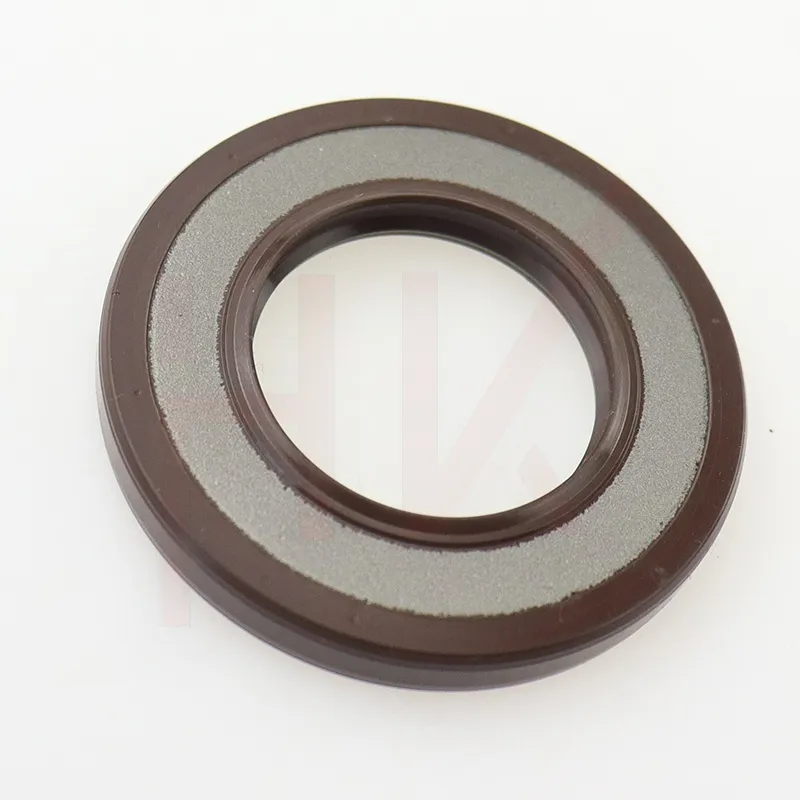10 月 . 21, 2024 14:28 Back to list
Understanding the Functionality and Applications of Radial Oil Seals in Machinery
Understanding Radial Oil Seals Their Importance and Functionality
Radial oil seals, commonly known as rotary oil seals or lip seals, are mechanical components designed to prevent the leakage of lubricants and the ingress of contaminants in rotating shafts. They play a crucial role in various applications, particularly in machinery and automotive industries, where maintaining a clean and well-lubricated environment is vital for optimal performance and longevity of mechanical systems.
The Structure of Radial Oil Seals
Radial oil seals typically consist of three primary components the seal body, the sealing lip, and a spring. The seal body is usually made from elastomeric materials, such as nitrile, viton, or silicone, which provide flexibility and resistance to wear. The sealing lip is a critical part of the seal that comes into contact with the shaft; it is designed to create a tight seal, minimizing the risks of fluid leakage. The spring, often made of stainless steel, maintains the contact force between the sealing lip and the shaft, ensuring that the seal adapts to any variations due to wear or shaft movement.
The design of radial oil seals can vary based on their application. Some seals have single lips, while others have double lips or additional features like dust lips that protect against external contaminants. The choice of material and design is influenced by factors such as the operating temperature, pressure conditions, and the specific type of lubricant used.
Functionality and Applications
Radial oil seals are integral to the functioning of various machines where rotary motion occurs. Their primary function is to retain lubricants while preventing external contaminants, such as dirt and moisture, from entering the system. This is especially important in high-speed or high-pressure environments, where even a small leak can lead to significant failures.
In the automotive sector, radial oil seals are used in engines, gearboxes, differential assemblies, and wheel hubs. Their performance directly impacts the efficiency of these systems. For example, an effective oil seal in an engine prevents oil from leaking out while keeping contaminants at bay, thereby prolonging engine life and enhancing performance.
In industrial machinery, radial oil seals are employed in pumps, compressors, and gearboxes. The reliability of these seals is essential in maintaining operational efficiency and reducing maintenance costs. Malfunctioning seals can lead to downtime, increased wear on components, and ultimately, costly repairs.
radial oil seal

Common Issues and Maintenance
While radial oil seals are designed to be durable, they can still fail due to various factors. Common issues include wear and tear from shaft movement, chemical degradation from exposure to harsh environments, and installation errors. Symptoms of a failing oil seal may include visible leaks, unusual noises, or loss of lubrication.
Routine maintenance of machinery that employs radial oil seals is crucial. This includes regular inspections to check for signs of wear or damage, monitoring fluid levels, and ensuring contaminants do not enter the system. In many cases, preventative maintenance can significantly extend the life of oil seals and the machinery they protect.
Selection and Installation
Choosing the right radial oil seal for a specific application involves several considerations. Factors such as the shaft diameter, operating temperature, pressure levels, and the type of lubricant must be taken into account. Additionally, the environmental conditions, including exposure to chemicals or extreme temperatures, can influence the choice of materials and design.
Proper installation of radial oil seals is equally important. Misalignment, improper fitting, or using the wrong type of seal can result in premature failure. It is essential to follow manufacturer guidelines during installation and to ensure that the sealing surfaces are clean and free from any debris.
Conclusion
In summary, radial oil seals are vital components in many mechanical systems, providing effective sealing solutions that protect against fluid leakage and contamination. Understanding their structure, functionality, and maintenance requirements is crucial for anyone involved in the design, maintenance, or operation of machinery. By ensuring that the right seals are used and adequately maintained, industries can significantly enhance the reliability and efficiency of their equipment, ultimately leading to reduced costs and improved performance.
-
The Power of Advanced Sealing: High-Pressure Solutions for Modern Machinery
NewsOct.29,2024
-
Optimizing Machinery with High-Performance Oil Seals
NewsOct.29,2024
-
Maximizing Machinery Efficiency with Advanced Oil Seals
NewsOct.29,2024
-
Ensuring Equipment Longevity with Quality Oil Seals
NewsOct.29,2024
-
Enhance Equipment Performance with Quality Oil Seals
NewsOct.29,2024
-
Custom Oil Seals for Specialized Machinery Needs
NewsOct.29,2024
-
The Role of Wiper Seals in Dust Sealing and Oil Protection
NewsOct.20,2024
Products categories
















